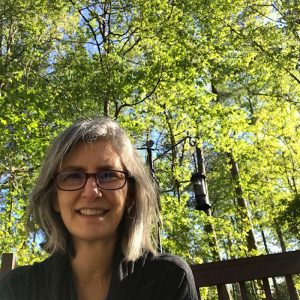Neal Kilgore remembers the fish kill on the Clinch River well. “I was about 10 years old. My friend and I would go fishing in the river often; but one day, all of a sudden, fish started coming up to the surface, struggling like they were trying to breathe. We had no idea what was going on. We just jumped in the river and started grabbing the biggest fish. We thought we’d hit the jackpot.”
What the boys didn’t know was that there had been a leak of hazardous wastewater from the power plant just upriver that was poisoning the water. “Later, my dad took us for a drive up the river road, and as far as we went, there were dead fish, all the way across and so many deep they could have supported your weight if you tried to walk over them.
“That’s what motivated me to get into environmental protection,” he says. “I could see the need.”
Now an easement specialist in southwestern Virginia for VOF, Kilgore helps landowners living the Clinch River Valley to protect their land from over-development. “People have begun to realize what a special place we have here,” he says. He started working with VOF in 2006. In the decade since, he has increased the amount of land protected by VOF easements in the Clinch-Powell watershed to more than 5,500 acres.
VOF’s work here is one piece of a larger effort. Groups like the Nature Conservancy, the Clinch River Valley Initiative, and the Clinch-Powell Clean Rivers Initiative are helping people and the outdoors to coexist in economically and environmentally compatible ways. The Virginia Department of Conservation and Recreation also offers informational resources to landowners who have caves or sinkholes on their land — features common in the region, which is characterized by karst topography. Karst contains aquifers that can provide large supplies of water, and thousands of Virginians get their clean drinking water from these aquifers.
It will take continued vigilance and concern from local citizens to ensure the Clinch River Valley’s success. While still grappling with agricultural pollution and the environmental impacts from decades of coal mining, the Clinch River Valley has conserved its status as a biodiversity hotspot. In 1990, it was designated one of the Nature Conservancy’s 39 “Last Great Places” for its largely intact ecosystem, which hosts 48 imperiled and vulnerable animal species, including 29 varieties of rare freshwater mussels and 19 species of fish.
“It’s amazing that it’s rebounded the way it has, but the river is a mirror for how you treat the land,” Kilgore adds. “If you don’t manage the land well, then the river can’t survive.”
